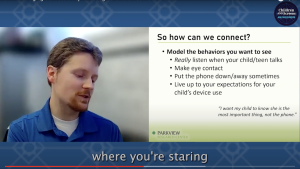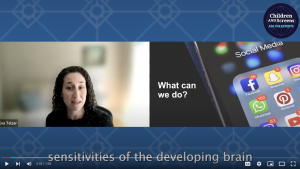
Sherry Turkle, PhD (Abby Rockefeller Mauzé Professor of the Social Studies of Science and Technology, Founding Director, MIT Initiative on Technology and Self, Massachusetts Institute of Technology), discusses the differences between real-life face-to-face interactions and curated, screen-based communication at the #AskTheExperts webinar “PITR, IKR?: Youth and Communication in the Digital Age” on October 19, 2022.
[Dr. Sherry Turkle] Screen life has an aesthetic. It says that the difficult will be made easy, the rough will become smooth and that which had friction will become friction-free because from its very beginning, the new digital world wasn’t supposed to be just friction-free in the sense that economic transactions would go more smoothly, with expediencies such as electronic funds transfer. The vision was much more ambitious. The goal was to minimize and even eliminate social friction, interactions that might cause emotional stress. Screens were supposed to teach us to see the stress of human relationships as a problem that technology could solve. Screens teach us, in fact, that vulnerability is a problem that technology can solve. But actually, life teaches young people. Life teaches adolescents one thing, just as screens are trying to teach them another. Because face-to-face interactions with peers teach adolescents, in fact teaches everybody that when we stumble and lose our words, it’s uncomfortable. But we can come closer to each other. Screen life suggests new connections that allows us to edit our thoughts, to self-curate. Life teaches the importance of imperfect presence.
View the Full Webinar

PITR, IKR?: Youth and Communication in the Digital Age
The latest research (and perspectives from teens themselves) on trends in youth digital communication and tips for creating positive and connection-centered communication online or offline.
Ann Cameron, PhD
Honorary Emerita Professor of Psychology; Emerita Professor
Sherry Turkle, PhD
Abby Rockefeller Mauzé Professor of the Social Studies of Science and Technology; Founding Director, MIT Initiative on Technology and Self
Sebastian Wachs, PhD
Deputy Professor for Education and Socialization Theory; Honorary Research Fellow
Richard Guerry
Founder and Executive Director



